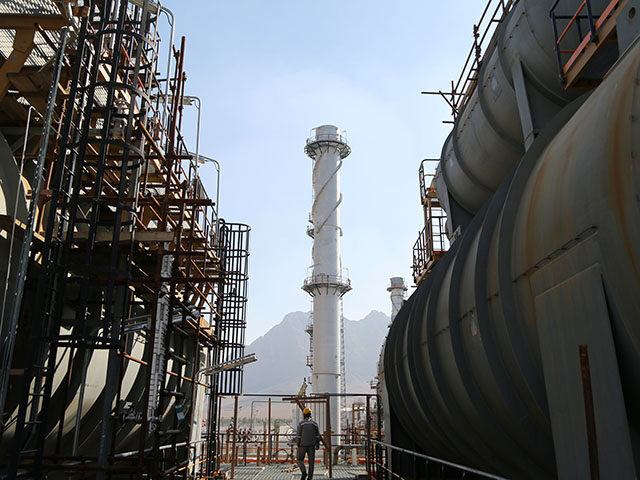Iran’s state-affiliated Tasnim News Agency claimed on Tuesday that the nation’s crude oil production output reached 3.115 million barrels per day (bpd) in October.
The continued increase in Iran’s oil production throughout 2023, and October’s surge in particular, was documented after the Biden Administration temporarily lifted oil and gas sanctions on Venezuela’s rogue socialist regime. The Venezuelan socialists are not just a key ideological ally in Iran’s fight against the United States, but an oil business partner for the Islamic regime aiding in lucrative joint business projects.
The Iranian regime is the world’s top financial backer of terrorism and is long believed to have funneled hundreds of millions of dollars to the Sunni jihadist terror organization Hamas. The increase in profits derived from the boom in oil production output could potentially be used to further fund terrorism.
Tasnim reported that, based on data from the Organization of Petroleum Exporting Countries (OPEC), Iran’s 3.115 million bpd output in October represents an increase of 46,000 bpd when compared to September’s 3.069 bdp output.
Similarly, the Tehran Times reported that Iran’s average crude oil output for the third quarter of 2023 was documented at 2.996 million bpd which, according to the state-affiliated news agency, marked a 298,000 bpd increase when compared to the same period in 2022. Iran’s average output in 2021 was measured at 2.392 million bpd, denoting a continued surge in oil production over the past three years.
“These statistics show that the Islamic Republic has maintained its place as the third-largest oil producer among the OPEC members,” the Tehran Times stated.
Iran’s upsurge in output and the subsequent profits are likely to be boosted by the oil sanctions relief to Venezuela, which allows Caracas to sell its oil and that processed in the country to American and other international markets.
President Joe Biden granted sanctions relief to socialist dictator Nicolás Maduro in exchange for a vague promise of holding “free and fair” elections sometime next year. So far, the Maduro regime seems keen on not upholding its word.
In the past decade, the Islamic regime has increased its presence and influence on the South American nation as part of its continued multi-decade plan to expand its influence across the entirety of Latin America.
In the case of fellow OPEC member Venezuela, Iran is one of the top business partners of the Maduro regime. Most notably, Iran has provided Venezuela with extensive technical and logistical assistance towards repairing Venezuela’s rundown oil refineries after nearly 25 years of socialist mismanagement pushed the nation’s entire oil industry infrastructure to the brink of total collapse. The renovations also seek to reduce Venezuela’s dependency on the U.S.-made technology originally employed in the construction and operation of the refineries.
Iran has also expanded its oil refining capacities overseas and, as of last year, it has begun refining its own crude oil in Venezuela’s now-repaired refineries. The sanctions relief awarded to the Maduro regime also came at a time when Iran, together with Venezuela and Syria, are ramping up plans to build an oil refinery in the Syrian town of Homs.
If successfully built, the proposed Homs oil refinery would be able to process 140,000 barrels per day, which will result in a significant boost to production and yield further profits for the three allied authoritarian regimes.
According to a report published by Reuters last week, Iran’s increased oil output has also translated into Iran registering record-high oil exports to its top customer, China.
China, which is the world’s largest crude oil importer and also imports sanctioned oil from Russia and Venezuela, bought an average 1.05 million barrels per day of Iranian oil between January and October, which represents a 60-percent increase of China’s Iranian oil imports since the previous high records registered in 2017. In October, China bought an estimated 1.45 million barrels per day, marking the highest monthly level ever according to data obtained from energy cargo tracking company Vortexa.
Christian K. Caruzo is a Venezuelan writer and documents life under socialism. You can follow him on Twitter here.

COMMENTS
Please let us know if you're having issues with commenting.